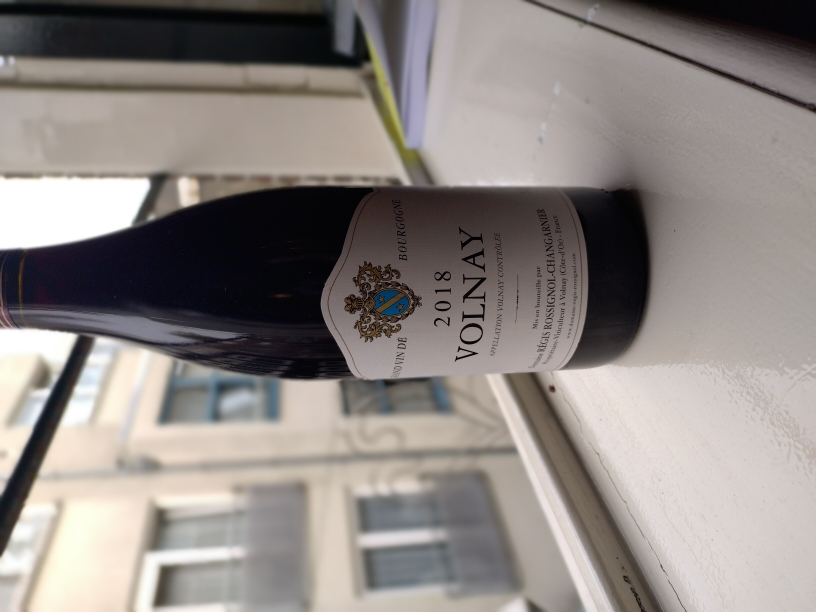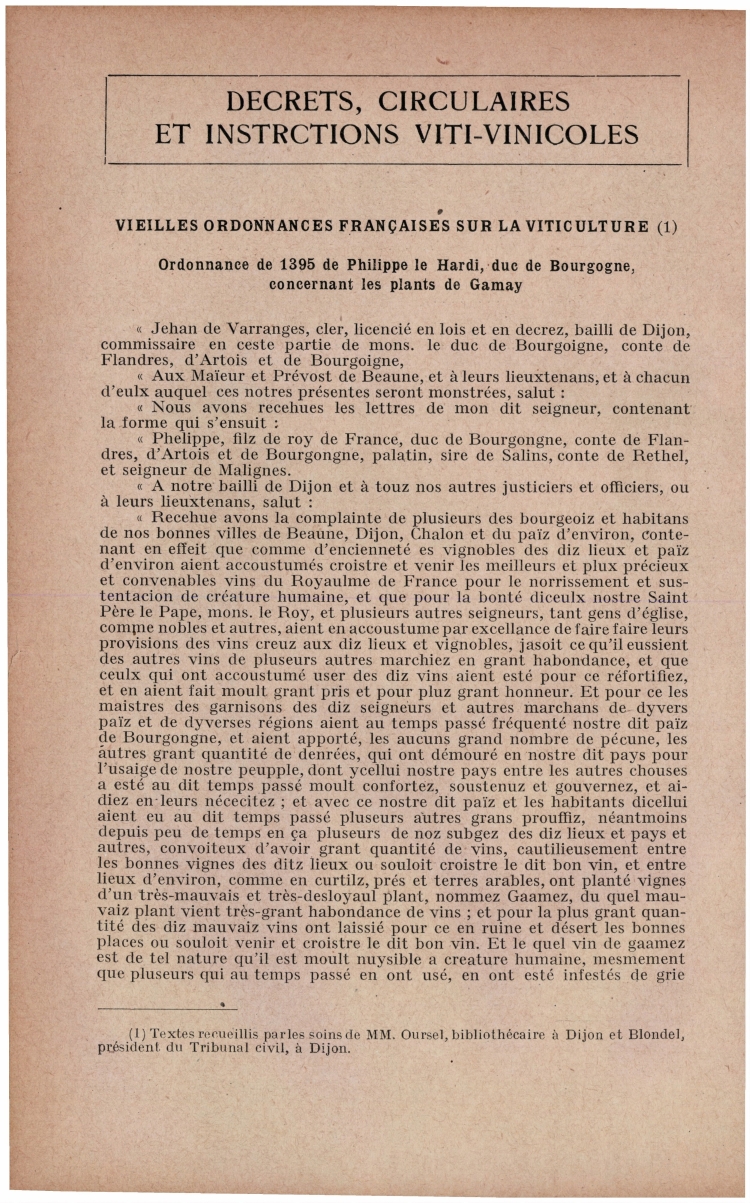Why you cannot drink a Gamay from Bourgogne?
Bourgogne wine region is the temple of Pinot Noir and Chardonnay with a little niche for the Aligoté variety. But no Gamay. However, Gamay was present in the region and Beaujolais, Lyon, and Loire Valley. Why can we not find Gamay in Bourgogne?
Well today we can, some winemakers start to grow Gamay, and it can count about 20% of the grape in the region, but only since the creation of the AOC system in 1935.

The reason may come from the economic development of the “Vins de Bourgogne” (Burgundy wines) and their influence in Paris and Europe and the political system in France throughout history.
Wine in Bourgogne exist since the Roman time. The wines from Bourgogne took off in the 12th century, in the actual department of Yonne, wine from Chablis start to be marketed in the Parisian market. In the following century, The Duke of Burgundy, Eudes III, grant privileges to the city of Beaune and open the Flanders and Parisian markets. The ambition is to make the Wine from Bourgogne, the best wine in Europe. The wine was on the table of people of power all across Europe. In 1416, King Charles VI of France issued a law creating the first modern appellation of “Vins de Bourgogne”.
At this time, the Duchy of Bourgogne is relatively independent from the French kingdom. Territories of the Duchy included Belgium, Luxembourg, and part of the Netherlands. The wine was a tool of power for the vassal of the French kingdom.
Vine growing at this time was very different compared to our modern time, vine varieties were barely known, and pest prevention did not exist. In the late 14th century a large part of the vineyard was destroyed by an insect, “latinea uvella”.
A grape variety present in a village near Beaune started to be planted because it was more resistant and easier to grow.. You guessed the name of the village is Gamay. It started to be planted in place of Pinot Noir.
In 1395, the duke Philippe II le Hardy, issued a law to prohibit the cultivation of gamay. “Et le quell vin de Gaamez est de tel nature qu’il est moult nuyssible a creature humaine” (And the wine of Gaamez is of such a nature that it is very harmful to human beings). People should use Pinot and remove Gamay. Growing Gamay was punishable by a fine.

By doing so, the duke creates the first foundation of modern wine, monoculture. Later, the church created what we know as climates and the “crus”. A harvest calendar was set up, the best parcel first.
But why ban Gamay? After all, it is a variety of wines we enjoy in the wine from Loire, Beaujolais, Auvergne, and elsewhere. It produces light and fruity red wines. A lot of people love wine from this variety. How can people in Bourgogne during the Middle age ban this variety?
One hypothesis could be that Gamay was relatively new at this time.. The vines were young and planted everywhere people can. As Gamay is easier to cultivate, it may have been planted in places not suitable for wine. Young plants and bad soil may be one of the explanations for the bad taste Philippe Le Hardi talked about in his law.
Unlike Pinot, Gamay tends to have shallow roots, which can result in a more acidic taste (the vine could not extract enough water from the soil). Today, the carbonic maceration softens the acidity and extracts more fruit. But carbonic maceration wasn’t known until the 19th century.
Finally, as Gamay is easier to cultivate, it is also very productive. However, the amounts of nutrients and photosynthesis remain constant, regardless of the number of berries on the vine. With more fruits, there is also less concentration of sugar and other important molecules, resulting in a less concentrated and less tasty wine.
This moment in History explains a lot about modern wines. At this time wine was already a commercial product and an element of power. The Philippe II law was not only a law but also the foundation of what will become modern wine-making practices. The quest for quality led to a focus on a small number of grape varieties and the establishment of a hierarchy of terroir.
The Gamay was soon returned to Bourgogne, but as an accessory grape variety, with some success, a Bourgogne Passe Tout Grains is a blend of Gamay and Pinot Noir.